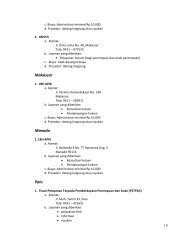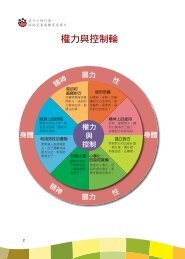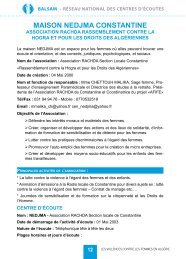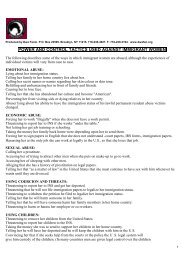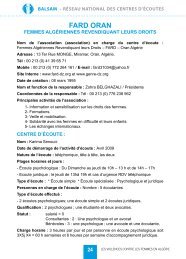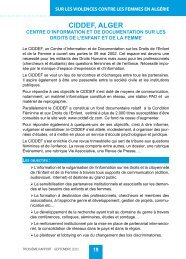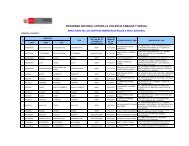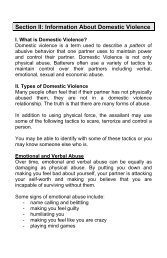Domestic Violence Counseling Manual - Hot Peach Pages
Domestic Violence Counseling Manual - Hot Peach Pages
Domestic Violence Counseling Manual - Hot Peach Pages
Create successful ePaper yourself
Turn your PDF publications into a flip-book with our unique Google optimized e-Paper software.
3. “<strong>Domestic</strong> violence only happens in working class families”<br />
Although it is argued that poverty exacerbates domestic violence, in the sense that a woman’s options<br />
of other financial and practical support are very limited or non-existent, and that financial problems<br />
can place strain on a relationship, those involved in it and a family, it is not true that it is a problem<br />
specific to poorer families. <strong>Domestic</strong> violence cuts across all boundaries: economic (class), social,<br />
ethnic, cultural, religious and professional. Many women who have careers are abused and caught up<br />
in the same cycle of abuse as women who work at home. Factors of dependency and opportunity may<br />
differ but the psychological effect of abuse is the same.<br />
4. “Abusers must come from violent backgrounds.”<br />
Whilst there is a recognized pattern of abusers and abused continuing to abuse and be abused in their<br />
adult lives, it is not always the case. Many abusers do not come from violent backgrounds, and many<br />
families in which violence occurs do not produce violent men. The family is not the only formative<br />
influence on behavior. Furthermore, this statement is dangerous because it can be used as an excuse<br />
for the abuser’s behavior, both by the abuser and the abused. The abused may be more likely to<br />
accept her abuser’s behavior because she can rationalize it in this way, which in turn may lead to selfblame.<br />
This attitude also encourages the abuser to rationalize his behavior, prevents him from<br />
accepting responsibility for it and from seeking help to change it. Ultimately, adults are responsible<br />
for their own actions and have a choice in how they behave.<br />
5. “All abusers are alcoholics or drug addicts, it’s the drug that causes the violence.”<br />
Alcohol or drug abuse is often mistakenly perceived as a cause of violence. An abuser may say that<br />
he lost control or didn’t know what he was doing because of his alcoholism or drug abuse, but he is,<br />
nevertheless responsible for his actions. The drug may reduce the abuser’s inhibitions, but his actions<br />
are his own, not the drug’s. While substance abuse is related to violent behavior, successful<br />
treatment of that problem will not necessarily put an end to the violence. The abuser uses alcohol or<br />
drugs as one more excuse or justification for his actions, one more way to avoid taking responsibility<br />
for his own actions. This is a particularly potent myth reinforced by bogus studies such as the study<br />
done by Joseph Iyo, Ph.D. (1998, October) for the Belize Organization for Women and Development.<br />
Because he found a correlation between alcohol and domestic violence, he leapt to the incorrect<br />
conclusion that it caused domestic violence.<br />
6. “She must ask for it/ deserves it/ provokes it.”<br />
This attitude unfairly shifts the responsibility of abuse from the abuser to the abused. Many women<br />
who are abused over a prolonged period of time start to rationalize the abuse, this includes feeling she<br />
is to blame for it. Furthermore, if her abuser constantly tells her that she provoked the abuse, if social<br />
opinion accepts this excuse, and if he will not accept responsibility for his actions, then she is likely<br />
to accept blame. Usually the battered wife will actually make extraordinary efforts to pacify their<br />
husbands. The abuser uses their abuse as a way to release tension and assume control; it is not a<br />
rational act.<br />
The following is an exaggeration, but image if a robbery victim underwent the same sort of cross-<br />
4-56



